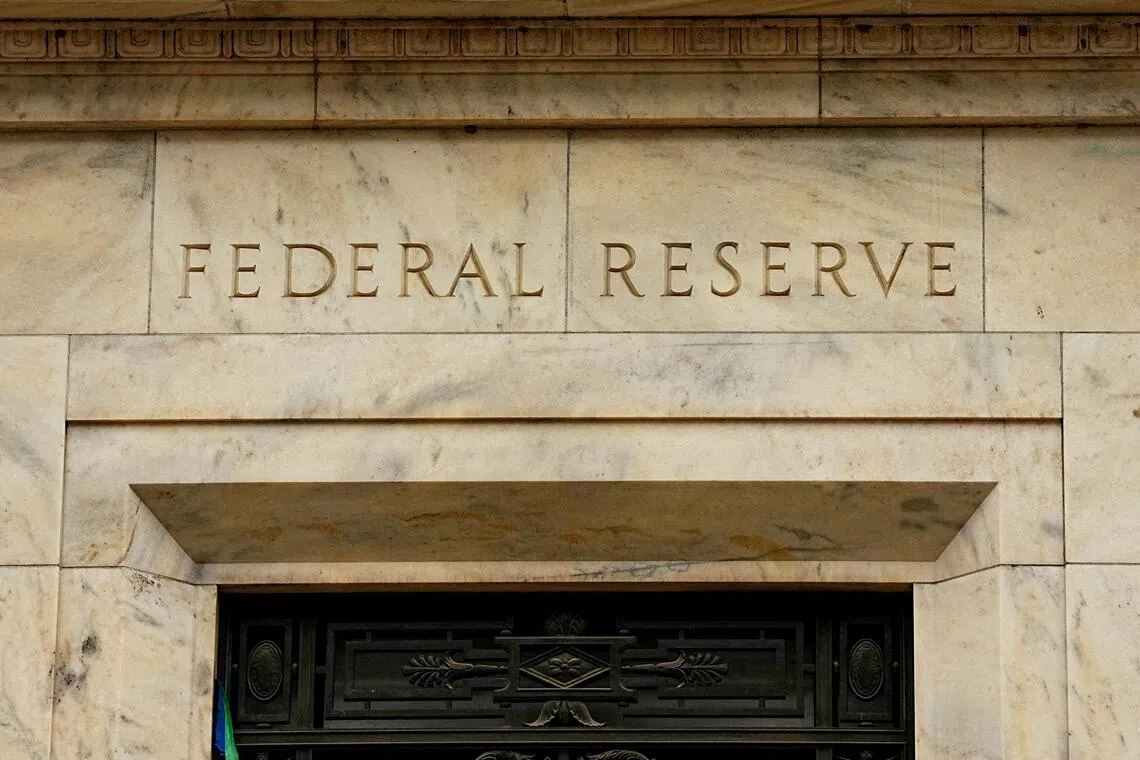Fed sees widening gap between rich and poor households; JPMorgan expects December rate cut
Sign up now: Get ST's newsletters delivered to your inbox

Fed policymakers have been divided over whether to hold or lower interest rates at their next meeting in December.
PHOTO: REUTERS
Follow topic:
- US economic activity remained mostly unchanged, with consumer spending declining except amongst higher-income shoppers, according to the Federal Reserve's Beige Book.
- Businesses are deploying labour-saving tactics such as hiring freezes due to immigration policies and attrition instead of directly cutting workers.
- JPMorgan now forecasts the Fed to cut interest rates in December and January after key Fed officials signalled support for easing policy.
AI generated
NEW YORK – US economic activity was little changed in recent weeks, though overall consumer spending declined further except among higher-end shoppers, the Federal Reserve said.
Employment declined slightly and prices rose moderately, according to the US central bank’s Beige Book survey of regional business contacts released on Nov 26.
“Outlooks were largely unchanged overall,” the Fed said. “Some contacts noted an increased risk of slower activity in coming months, while some optimism was noted among manufacturers.”
The report was based on information collected by the Fed’s 12 regional banks through Nov 17 and compiled by the Federal Reserve Bank of Dallas.
Multiple districts, including New York, Atlanta and Minneapolis, reported that spending among upper-income consumers was resilient, but was flagging for low- and middle-income households.
“Contacts noted that higher-income customers were unconstrained, but ‘customers in the middle to lower end of the financial spectrum are tightening the belt,’ said one contact,” according to the Minneapolis Fed.
Fed policymakers have been divided over whether to hold or lower interest rates at their next meeting in December. The report offered something for officials on both sides of the current policy debate.
Hiring freezes
While there was an increase in layoff announcements, more districts said businesses were deploying labor-saving tactics like hiring freezes and attrition instead of cutting workers directly.
On prices, tariffs were still a concern for businesses, especially those in manufacturing and retail, who reported widespread input cost pressures. Multiple firms reported tighter margins or financial strain related to tariffs, but some also said prices had declined due to reduced demand or delayed or reduced tariff rates.
“Looking ahead, contacts largely anticipate upward cost pressures to persist but plans to raise prices in the near term were mixed,” the Fed said.
Wage increases have been broadly in line with the Fed’s inflation goal in recent months, but the report said firms in the manufacturing, construction and healthcare sectors saw “moderate” wage pressure.
A staffing company in the Philadelphia district said immigration policies, which have drastically slowed the number of new workers entering the country, are causing many managers to raise wages to compete for a smaller pool of workers.
Shutdown impact
The report was mostly compiled during the government shutdown, which ended Nov 12. It noted that some retailers said the shutdown had a negative impact on consumption. There was also increased demand for food assistance, partly due to the disruption in the distribution of benefits while the government was closed, community organisations reported.
Anecdotal reports on how businesses and consumers are faring have drawn more attention in recent months because the shutdown disrupted the collection and reporting of key economic data. Fed officials will not have most labour market and inflation figures for October and November until after their December meeting.
The dearth of official national-level data has contributed to a splintering among Fed officials over whether to lower interest rates in December.
Market bets for the December meeting have whipsawed between a cut and holding rates steady, though the odds of a cut are now at around 80 per cent after two policymakers who often hew closely to chairman Jerome Powell’s preferences signalled they would support lowering rates.
JPMorgan flips forecast
Economists at JPMorgan Chase see the Fed cutting interest rates next month, a reversal of the bank’s briefly held view that policymakers would delay reducing borrowing costs until January.
A team led by chief US economist Michael Feroli said on Nov 26 that commentary supporting a near-term cut from key Fed officials – notably the president of the Federal Reserve Bank of New York, Dr John Williams – has pushed them to reconsider.
Wall Street’s largest bank had previously forecast a hold after the publication of the delayed September jobs report last week.
The Federal Open Market Committee (FOMC), led by Mr Powell, meets in Washington on Dec 9 and 10. JPMorgan forecasts the Fed will carry out two, quarter-point cuts next month and in January.
“We’re back to looking for a final cut in January,” Mr Feroli wrote in a note to clients. “While the next FOMC meeting remains a close call, we now believe the latest round of Fedspeak tilts the odds toward the Committee deciding to cut rates in two weeks from today.”
JPMorgan’s refreshed view aligns with the market perspective of swap traders, who are presently pricing a roughly 80 per cent chance that the Fed will ease policy by a quarter-point next week. That’s up from less than 30 per cent a week ago, after the publication of the September labour data but before Dr Williams’ comments. BLOOMBERG

